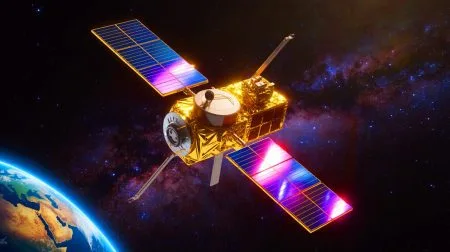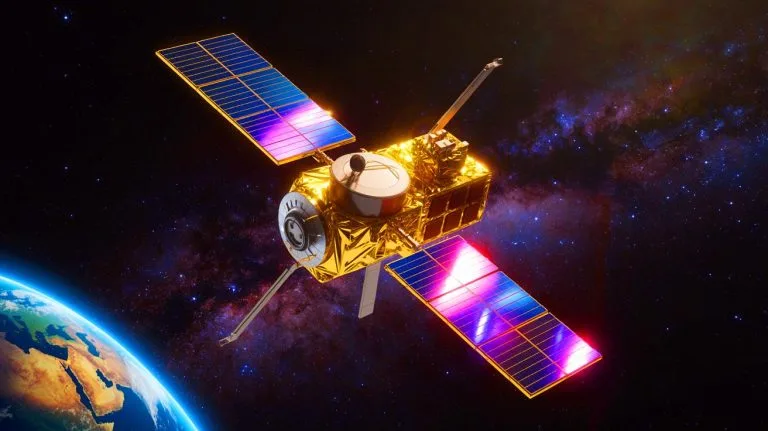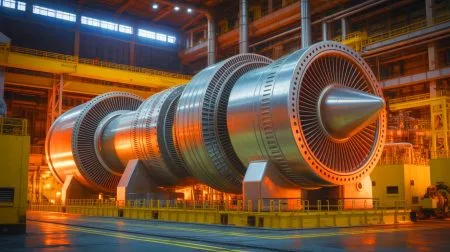| IN A NUTSHELL |
|
Boeing has taken a significant leap forward in the aerospace industry by introducing 3D-printed solar arrays. This innovative approach aims to cut the production cycle of these critical satellite components by half. Such a reduction in time could revolutionize the way satellites are built and deployed, potentially making them available for missions by 2026. The deployment of these 3D-printed solar arrays marks a notable shift in satellite manufacturing, promising enhanced efficiency and speed. As Boeing pushes the boundaries of aerospace technology, the implications of this development could ripple across the entire industry, affecting both the pace and cost of space exploration.
Revolutionizing Satellite Production
Boeing’s foray into 3D printing for solar arrays is a bold step toward modernizing satellite production. The aerospace giant claims that by integrating 3D printing into its processes, it can reduce the typical build times of solar array wings by up to six months. This translates into a 50% improvement in production speed compared to traditional methods. Such advancements in additive manufacturing are poised to make a substantial impact on satellite constellations, providing a competitive edge in the rapidly evolving space sector.
The first generation of these 3D-printed solar arrays will incorporate Spectrolab solar cells and will be installed on small satellites developed by Millennium Space Systems. Both of these companies fall under Boeing’s Space Mission Systems division. The integration of robotic-assisted assembly and automated inspection further enhances the efficiency of this process, minimizing human error and ensuring consistency.
Michelle Parker, Vice President of Boeing Space Mission Systems, highlighted the significance of this development by stating, “Power sets the pace of a mission.” Boeing’s new approach not only promises to accelerate production but also to set a new benchmark for future satellite missions.
Innovative Design Features
The innovative design of Boeing’s 3D-printed solar arrays allows the integration of various components directly into the substrate. This design eliminates the need for dozens of separate parts, long-lead tooling, and delicate bonding steps. Instead, each panel is crafted as a single, robust piece that integrates harness paths and attachment points with precision. This streamlining of production results in significant time savings and improved structural integrity.
Boeing’s collaboration across its enterprise leverages its expertise in additive manufacturing, Spectrolab’s high-efficiency solar technology, and Millennium’s production capabilities. The result is a parallel build process that aligns the production of solar arrays with the manufacturing of solar cells, further reducing production times and supporting higher-rate production.
By transforming production speed into a strategic capability, Boeing is poised to assist its customers in deploying resilient satellite constellations more rapidly. This advancement could redefine the landscape of satellite technology, offering enhanced capabilities and efficiencies.
Scaling for Larger Platforms
While the initial focus of Boeing’s 3D-printed solar arrays is on small satellites, the company envisions scaling this technology for larger platforms as well. The design is adaptable, capable of being implemented on Boeing’s 702-spacecraft series and beyond. The company plans to make these arrays commercially available by 2026, underscoring its commitment to driving innovation across its product lines.
Boeing has already integrated over 150,000 3D-printed parts throughout its portfolio, including more than 1,000 radio-frequency components on each Wideband Global SATCOM (WGS) satellite currently under production. Several small-satellite product lines also feature fully 3D-printed structures, demonstrating Boeing’s commitment to additive manufacturing.
Melissa Orme, Vice President of Materials & Structures at Boeing Technology Innovation, emphasized the potential of 3D printing:
“As we scale additive manufacturing across Boeing, we’re not just taking time and cost out, we’re putting performance in.”
This approach promises to enhance performance while reducing production time and cost, offering a compelling value proposition for Boeing’s customers.
Implications for the Aerospace Industry
The introduction of 3D-printed solar arrays by Boeing could have far-reaching implications for the aerospace industry. By reducing production times and costs, Boeing is setting a new standard for satellite manufacturing. This innovation not only enhances the competitiveness of Boeing’s offerings but also sets the stage for a new era of faster, more efficient satellite deployment.
Boeing’s strategy of incorporating additive manufacturing into its production processes is reflective of a broader trend within the industry. As aerospace manufacturers strive to improve efficiency and reduce costs, 3D printing is becoming an increasingly attractive option. The potential for further advancements in this field is significant, with the promise of lighter structures, novel designs, and enhanced performance.
The future of satellite technology could be shaped by these developments, offering new opportunities for exploration and innovation. As Boeing continues to push the boundaries of what is possible in aerospace manufacturing, the question remains: how will these advancements influence the next generation of space exploration?
As Boeing’s 3D-printed solar arrays move closer to market availability, the aerospace industry watches with keen interest. The potential for reduced production times and costs, combined with enhanced performance, presents a compelling case for the widespread adoption of this technology. However, as the industry evolves, questions linger about the broader implications for satellite manufacturing and the future of space exploration. How will other aerospace companies respond to this technological leap, and what new innovations might emerge as a result?
Did you like it? 4.5/5 (26)







Amazing innovation! Can’t wait to see it in action. 🚀
Wow, cutting production time by 50%? That’s pretty impressive, Boeing! 🚀
Are there any environmental benefits to using 3D printing in satellite production?
This sounds like something out of a sci-fi movie! 👽
Does this mean more satellites in orbit, or just faster production times?
Hope this doesn’t mean more space junk! Anyone else concerned? 🌌
What challenges did Boeing face in developing this technology?
Is there a risk of these 3D-printed parts failing in space?
How long until we see 3D-printed rockets? 🚀
Wow, cutting production time by 50% is impressive!
How do these solar arrays perform in harsh space conditions?
Can’t wait to see how this changes the industry. Thanks, Boeing!
Is Boeing planning to patent this technology?
Hope they don’t rush things and compromise on quality! 🤔
How will this affect the competition in the aerospace industry?
Does this technology apply only to solar arrays?
Interesting but curious, how does this impact the workforce?
Will this technology be available for commercial use?
3D printing is the future! Go Boeing! 🚀
How does this affect the overall weight of the satellites?
How do the 3D-printed arrays compare in durability to traditionally manufactured ones?
What are the potential risks of using 3D-printed components in space?
Why is 2026 the target year for deployment?
Great innovation, but what are the cost implications? 🤨
Is this related to any recent advancements in 3D printing tech?
Are there any other companies working on similar technologies?
What does this mean for future space exploration missions?
Fascinating stuff, but I’m skeptical about the durability. 🤔
Hope this tech leads to more affordable space missions!
How involved were Millennium Space Systems in this project?